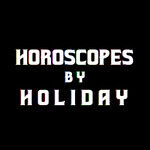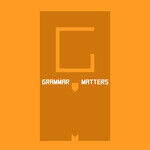Long before Tupperware was a gleam in the eye of DuPont chemist Earl Tupper, much perishable food in America was protected in the fridge within sturdy glass and china containers, some of the most handsome of which was produced by the Hall China Co. of Liverpool, Ohio.
Made in a variety of rich deco colors such as delphinium and cobalt blue, rose, pink and poppy red, and in a combination of rounded and squared-off shapes, these pieces are in considerable demand by collectors today.
The Hall China Co. was founded in 1903 as a result of the dissolution of the East Liverpool Pottery Co. Robert Hall, a partner in the merger, lived less than one year past its founding and was succeeded by his son, Robert Taggart Hall. Robert T. kept the firm's 38 potters busy making toilet seats, mugs, jugs and other white ware while he experimented in an effort to revive a lost single-fire process used in Ming Dynasty China. Finally, in 1911, his efforts bore fruit and Hall was able to produce lead-free, single-fire glazed china that was colorful, hard, strong, non-porous and craze-proof, a technique that is still used by the firm today.
The refrigerator line was inaugurated in the late '30s, concurrent with the decline of the icebox and the growing use of modern electric refrigeration. Hall made cold storage items for individual retail sale-including premiums — as well as special, exclusive designs for the likes of Westinghouse, Hotpoint, Sears, Montgomery Ward and General Electric, as well as premium items for other firms.
The three basic categories of Hall refrigerator ware were covered water containers or servers, boxes for leftovers and covered butter dishes. The water containers, used for storage of water in the fridge, were closed either with a cork-encased china stopper or with a china lid. (Collector interest in Hall water servers has been so strong that two of the patterns — Streamline and Norris — were reintroduced decades later.) The items made for leftovers were deep dishes with a shallow or flat china lid. The butter dishes have a flat bottom and a deep lid.
One of the most popular shapes was the "Hercules," which was offered as "Peasant Ware" by Westinghouse in 1940 and 1941. The set comprised a rectangular butter holder, a water server and two leftover dishes. The water server is most commonly found in cobalt blue, but it can also be found in tan with the Westinghouse stamp. (To distinguish the vintage from the more recent, be aware that post-1970 water servers have a square back stamp.)
The earliest Hall design used by Westinghouse was the "Phoenix," introduced in 1938 and most commonly found in delphinium, although its three pieces are also occasionally seen in lettuce green. Others are the "General" design set offered in 1939 as an accessory to Westinghouse refrigerators and found in garden green, sunset, yellow and delphinium, and the "Adonis" line introduced in the1950s, consisting of a water server, four small leftovers and two rectangular leftovers.
Some rarities to be on the lookout for, made for firms other than Westinghouse, include the Montgomery Ward rectangular leftover dish with V-shaped lid, and a large round "Adonis" leftover, also with a V-shaped lid, made for General Electric, Hotpoint water servers with cork-lined china stoppers, and a three-part Sears leftover set in cadet and Hi-white — the only refrigerator ware made for Sears.
But equally — if not more — desirable are the pieces made for the retail market, a mix of streamline deco curves and angular geometric shapes, in the typically jewel-like Hall colors, some even with touches of gold enhancement, such as the green Donut jug with "French Flower" decoration, a gold-encrusted handle and gold around the lip.
I don't know about you, but I'd much prefer storing my leftover veggies in one of these elegant objects than in modern plastic any day.
Linda Rosenkrantz has edited Auction magazine and authored 18 books, most recently "Beyond Ava & Aidan: The Enlightened Guide to Naming your Baby" (St. Martin's Press). Visit her baby names website at http://nameberry.com. She cannot answer letters personally. To find out more about Linda Rosenkrantz and read features by other Creators Syndicate writers and cartoonists, visit the Creators Syndicate website at www.creators.com.





View Comments